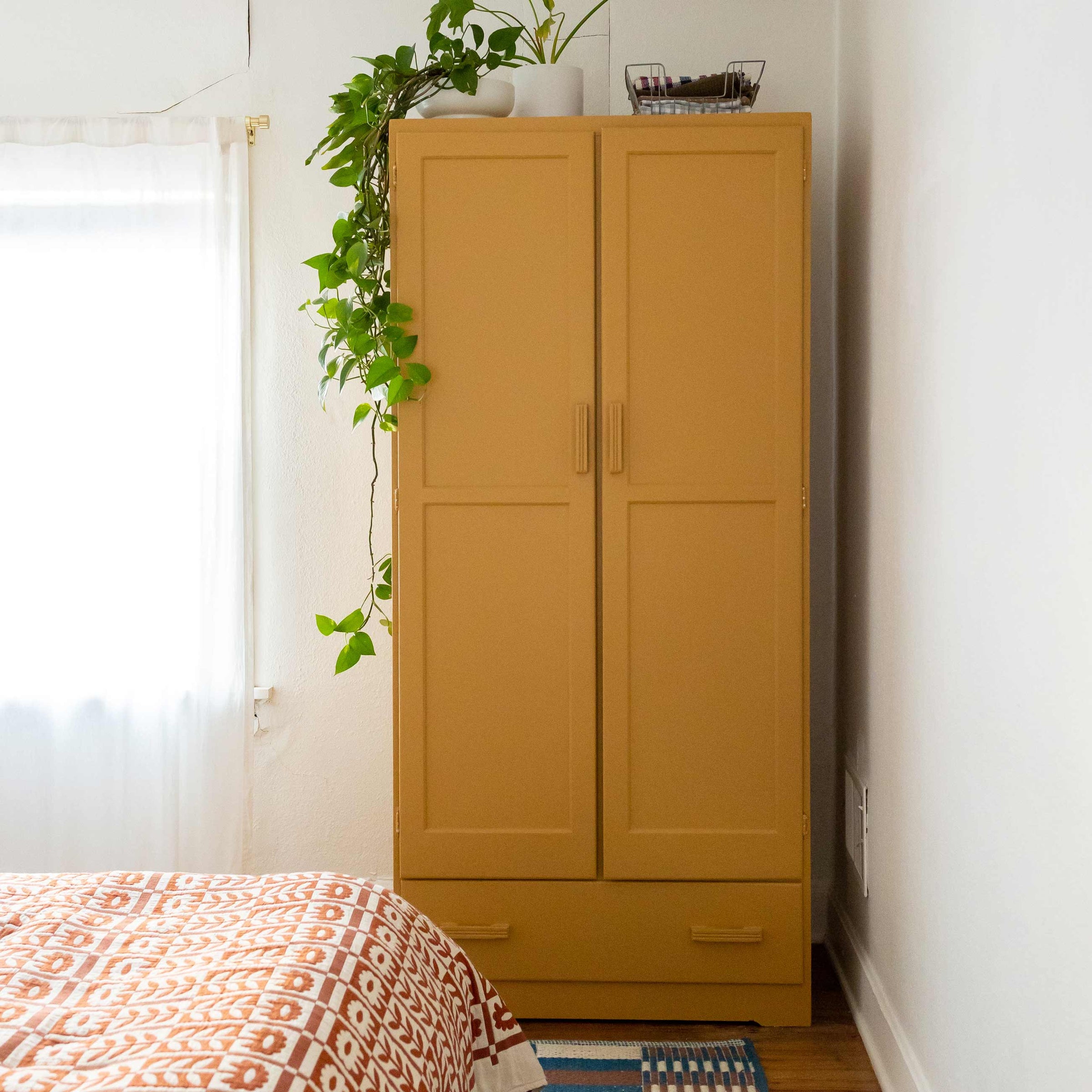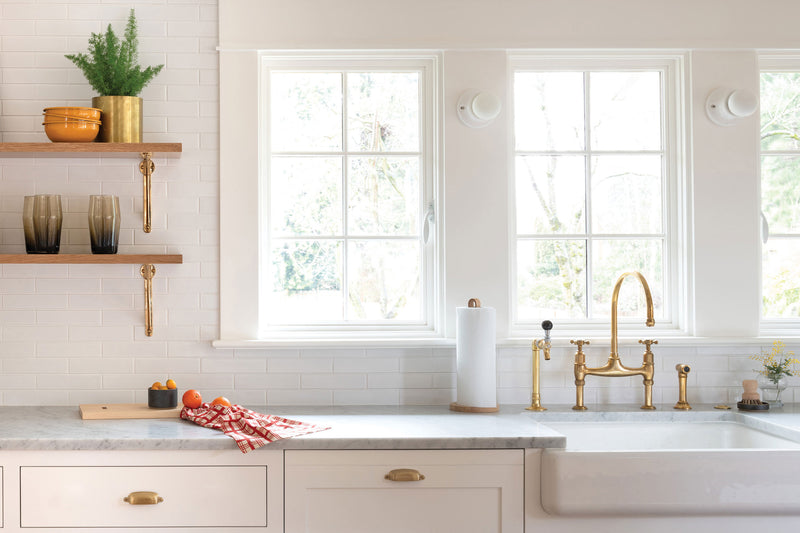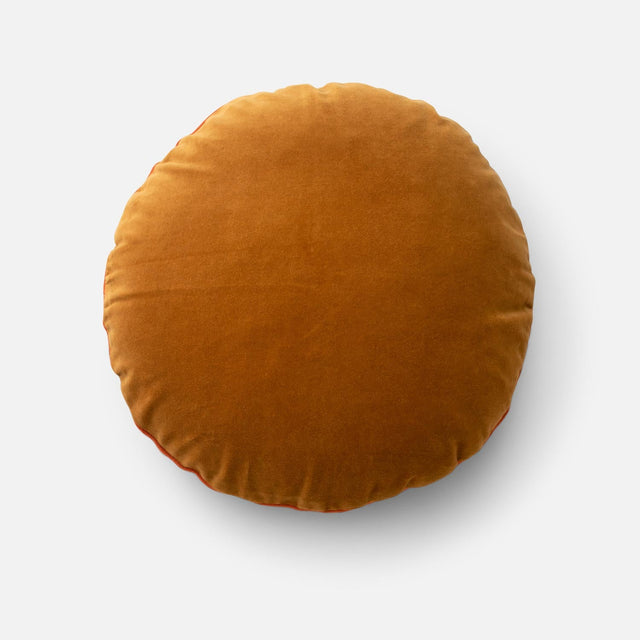Before & After: An Outdated Armoire Gets a Major Makeover

Sometimes all you need is a fresh coat of paint to make something feel completely brand new. As we enter a new year, we're thinking about the ways we can refresh our home and add a pop of color while simultaneously embracing our creative side. Enter the simplest DIY to ever exist, painting a piece of furniture. While it seems like a no-brainer, there are a few crucial steps you don't want to skip to ensure your hard work isn't wasted. Below, our copywriter, Chelsea, will walk you through the process she took to transform a thrifted armoire with a less than desirable paint job into a bedroom showstopper (and her new favorite place to store excess bedding).
Before:

Supplies
- Drop cloth
- 220-grit sandpaper
- Microfiber cloth
- Latex or oil-based primer
- 1 gallon interior paint depending on size of furniture (for this project Chelsea used French Horn by Benjamin Moore)
- Paint tray
- Trim paintbrush
- 2 short-nap rollers
Step 1: Sand it Down
I started the process by using a 220-grit sanding sponge (but you can use paper if you'd rather!) to scuff up the surface of the armoire in the direction of the grain. Don't be afraid to apply pressure, especially on areas that are looking extra damaged or rough! That said, be careful not to scour too hard because in the end, you want to ensure that your primer has something to stick to. Once the whole piece was sanded down, I wiped away all the dust with a microfiber cloth before moving onto the next step.
Step 2: Prime it Up
I always recommend priming before painting to give yourself a smooth and even surface to work with. Primer creates the perfect surface for paint to stick to, and makes it so that your new paint job won't peel off easily over time. It's also a great way to prevent any potential stains from bleeding through the new paint! When painting furniture it's important that the primer matches the exact type of paint you've chosen for your project. I've found that a latex or oil-based paint in a satin or semigloss finish usually works best!
When priming this piece, I was sure to coat the drawer frames and all the tiny nooks and crannies completely with my trim brush. For the larger surfaces, I used a roller to make things easier. Once I was finished priming, I let my project air dry for at least 24 hours to ensure the best outcome.
Step 3: First Coat
Once the primer was dry, it was time for the fun part! I used another paint roller to apply paint all over the surface of, and the trim brush to get those hard to reach areas. Once the whole piece had been covered in its first coat, I let it dry for at least 4-6 hours.
Step 4: Sand Again!
This step might seem counterintuitive, but I promise it will yield the best results. Once the armoire was dry, I lightly sanded any paint drips or spots that seemed uneven with finer-grade sandpaper. Typically, if you primed your furniture first like I did here, you might be able to skip this part entirely. Either way, it never hurts to give it a once over to be sure the piece is ready for its final coat!

Step 5: Let it Dry
Viola! Once the second coat of paint was dry I noticed that it needed just one more (sometimes this isn't the case though!). An extra coat of paint ensures the job lasts longer, and plays a big part in bringing out the true color of the chosen paint, which is why I opted for a third. Once the piece was completely dry, it was time for my favorite part, styling the latest addition to my home and sitting back to admire my hard work.








